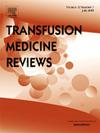Perioperative Transfusion Practices in Adults Having Noncardiac Surgery
Abstract
Surgical patients are often transfused to manage bleeding and anemia. Best practices for red blood cell (RBC) transfusion administration in patient having noncardiac surgery remains controversial and a robust evaluation and description of perioperative transfusion practices is lacking. We characterized perioperative hemoglobin concentrations and transfusion practices from the prospective VISION cohort which included 39,222 patients aged ≥45 years who had inpatient noncardiac surgery. Variations in transfusion practices were analyzed using hierarchical mixed models, and associations with mortality and complications were evaluated using a nested frailty survival model. Within the cohort, 16.1% (n = 6296) were given perioperative RBC transfusions, with the fraction declining from 20% to 13% over the 6-year study period. The proportion of patients transfused varied by surgery type from 6.4% for low-risk operations (i.e., minor surgery) to 31.5% for orthopedic surgeries. Variations were largely associated with patient hemoglobin concentrations, but also with center (range: 3.7%-27.3%) and country (0.4%-25.3%). Even after adjusting for baseline hemoglobin, comorbidities and type of surgery, both center and country were significant sources of variation in transfusion practices. Among transfused participants, 60.4% (n = 3728/6170) had at least 1 hemoglobin concentration ≤80g/L and 86.0% (n = 5305/6170) had at least 1 hemoglobin concentration ≤90g/L, suggesting that relatively restrictive transfusion strategies were used in most. The proportion of patients receiving at least 1 RBC transfusion declined from 20% to 13% over 6 years. However, there was considerable unexplained variation in transfusion practices.

 求助内容:
求助内容: 应助结果提醒方式:
应助结果提醒方式:


